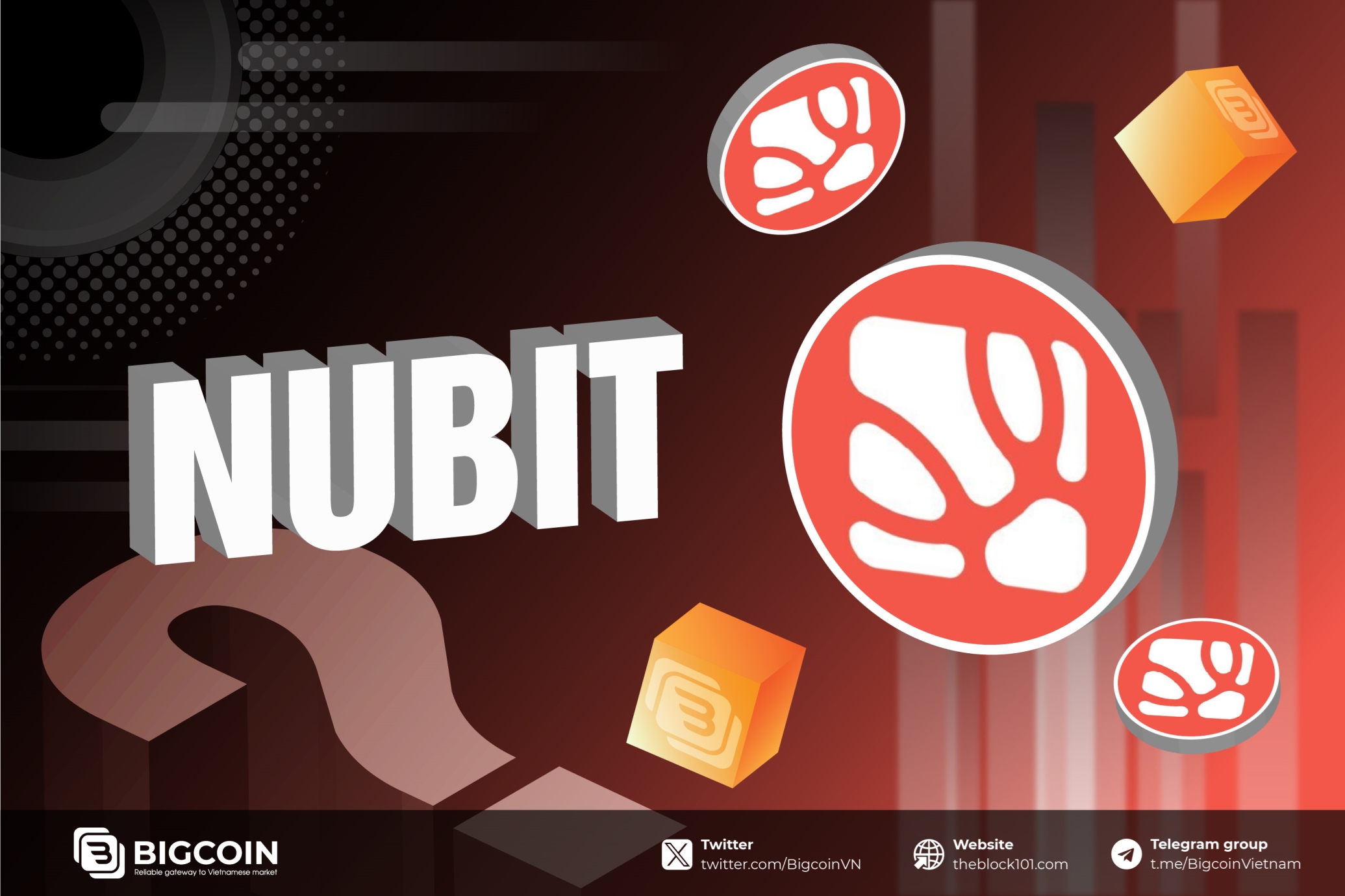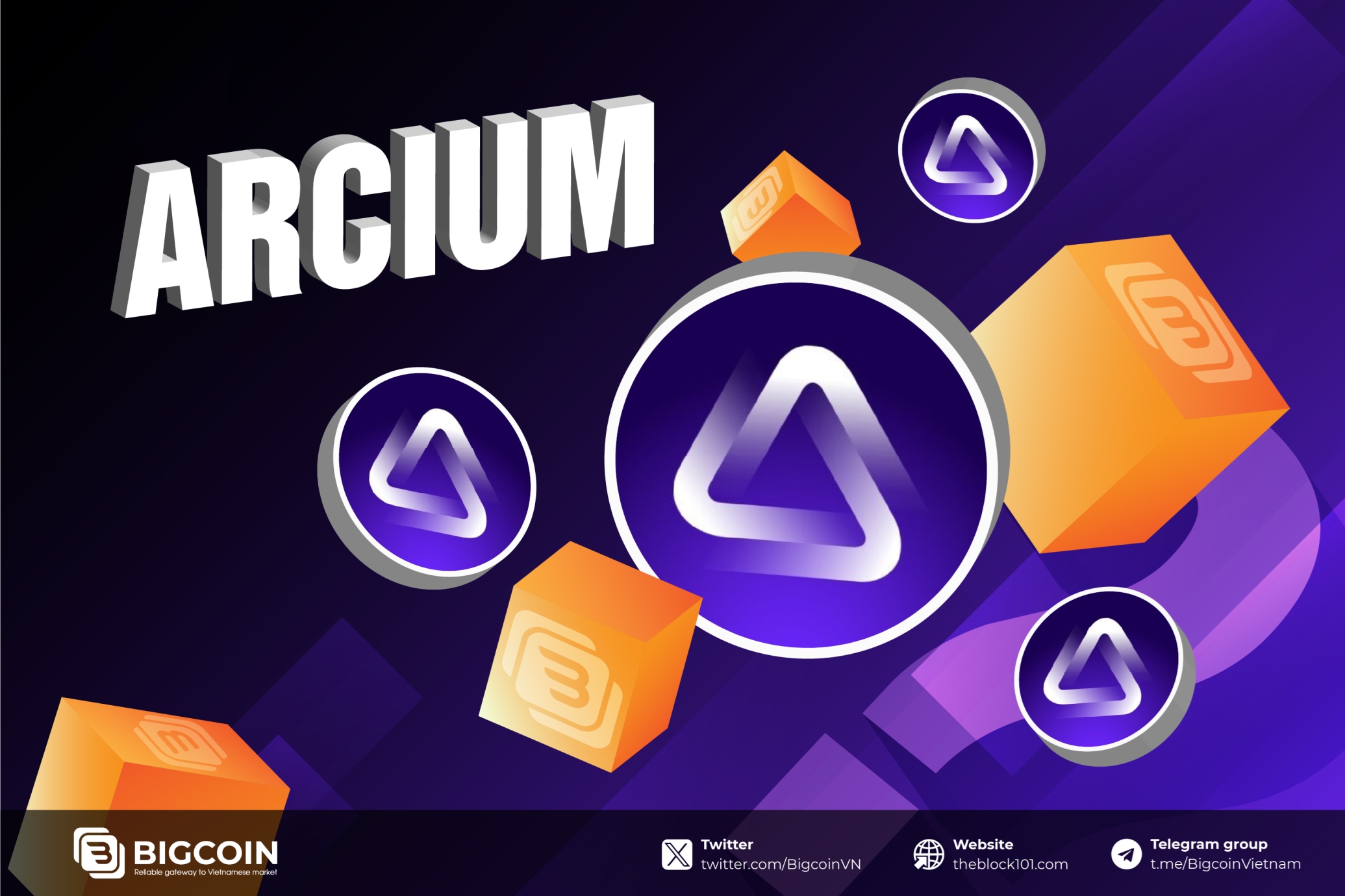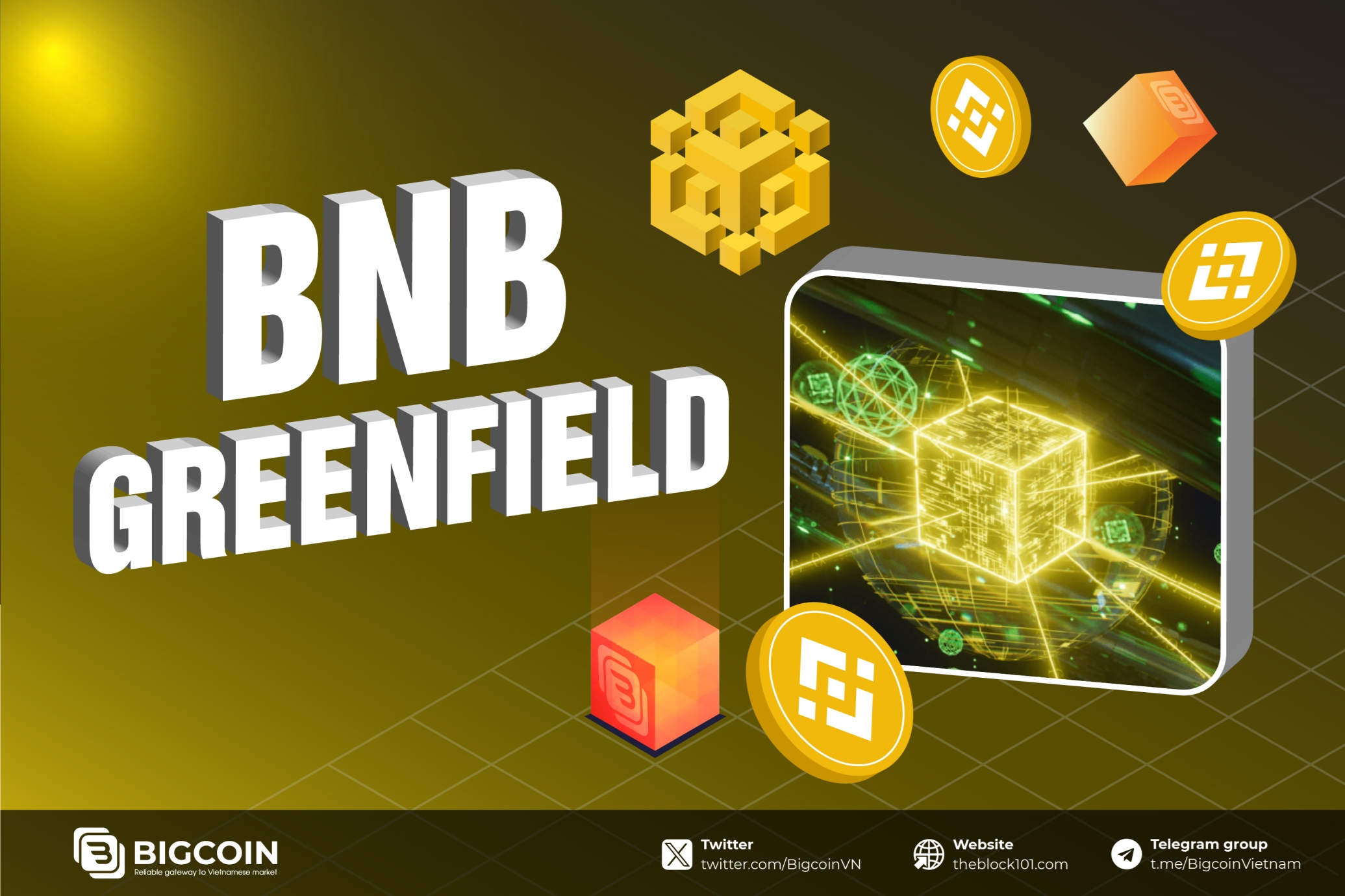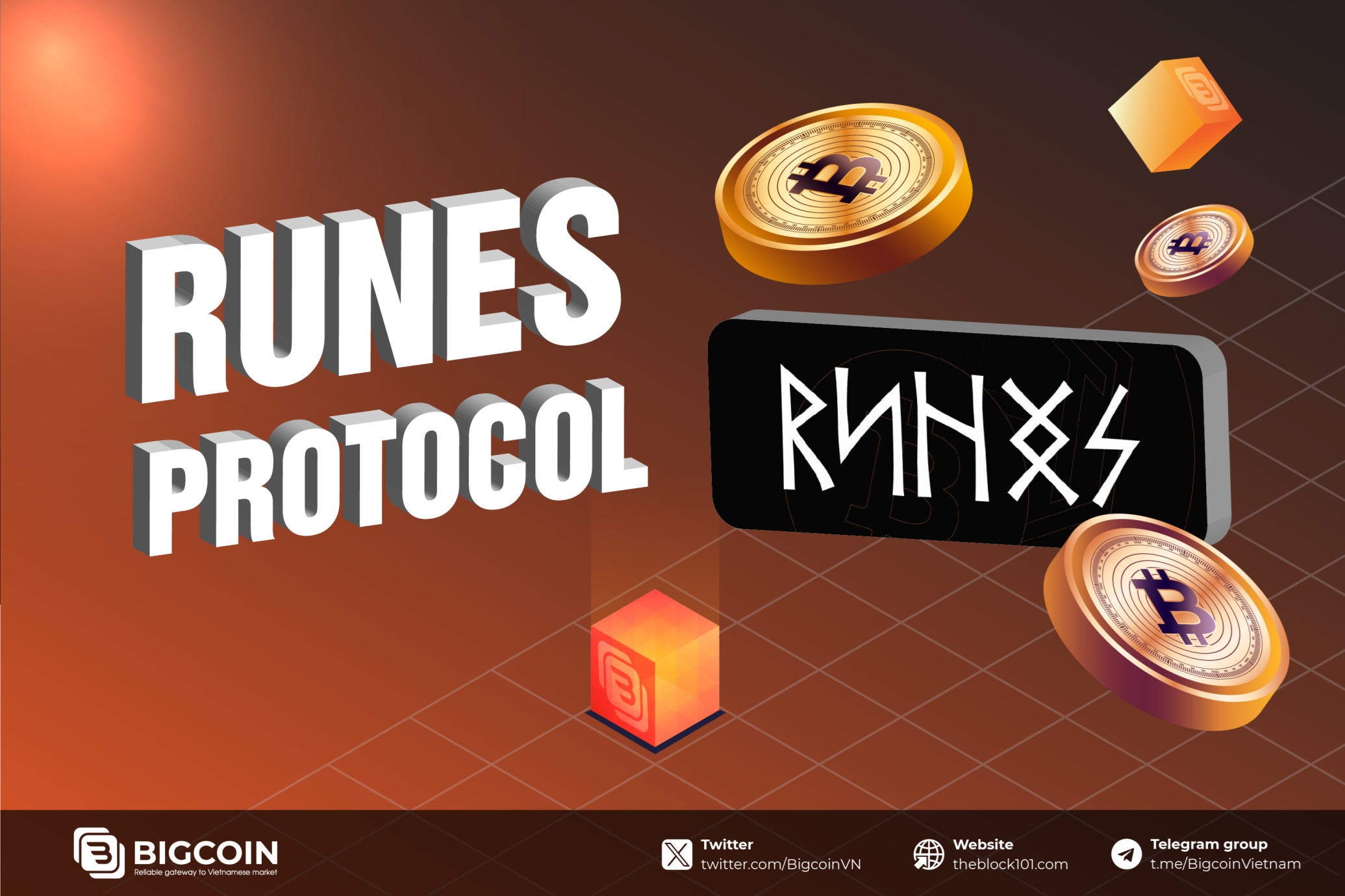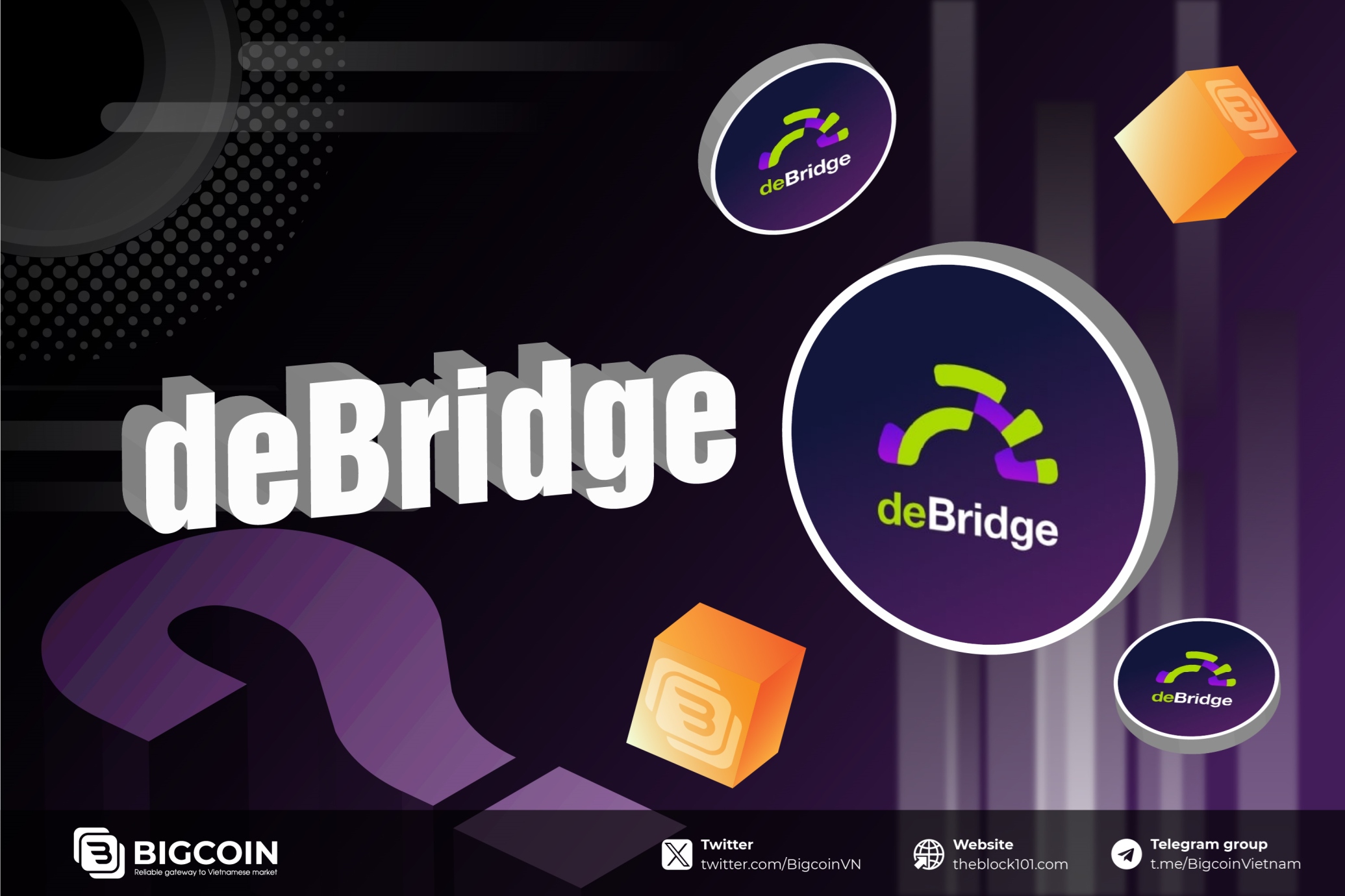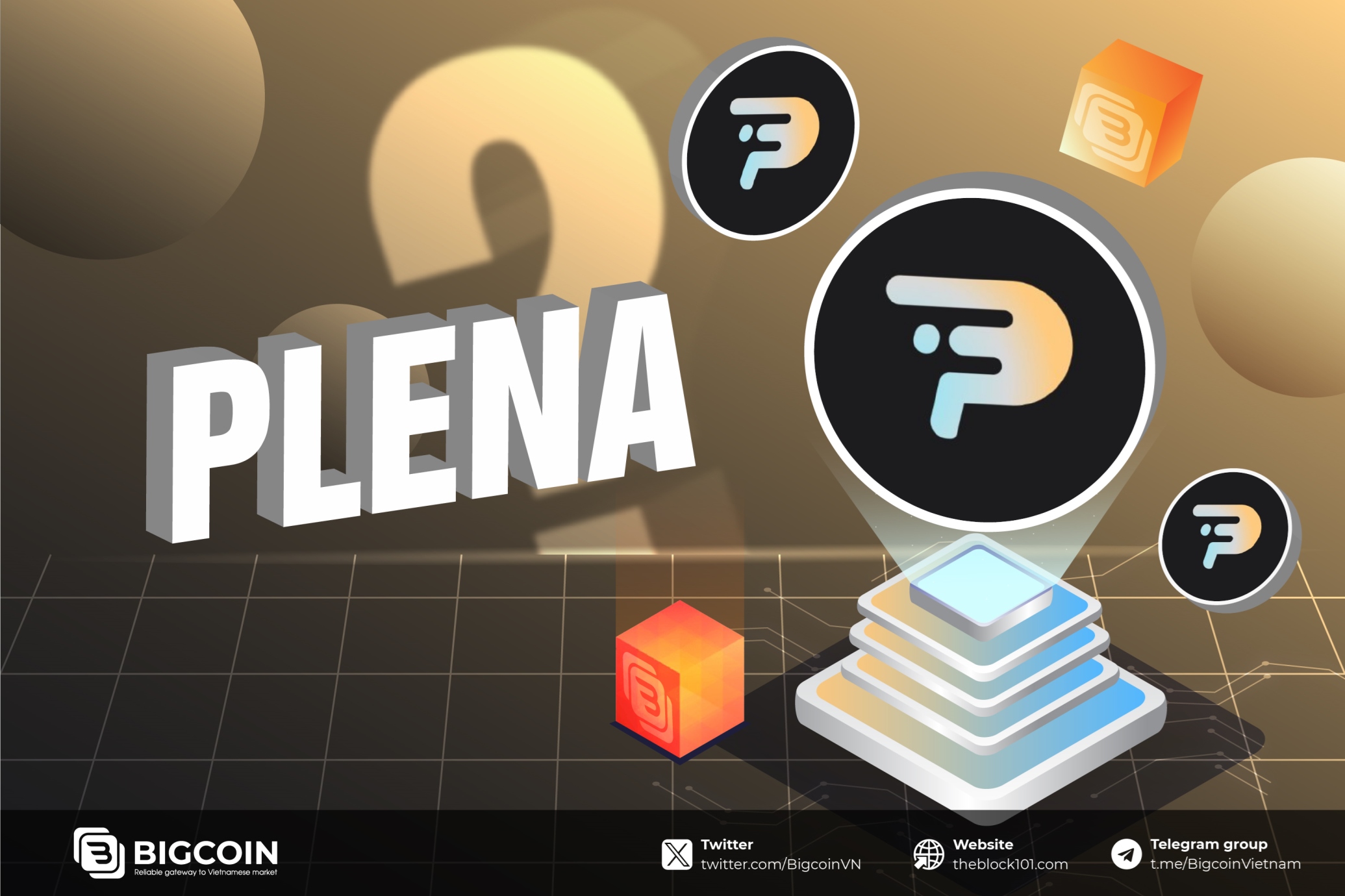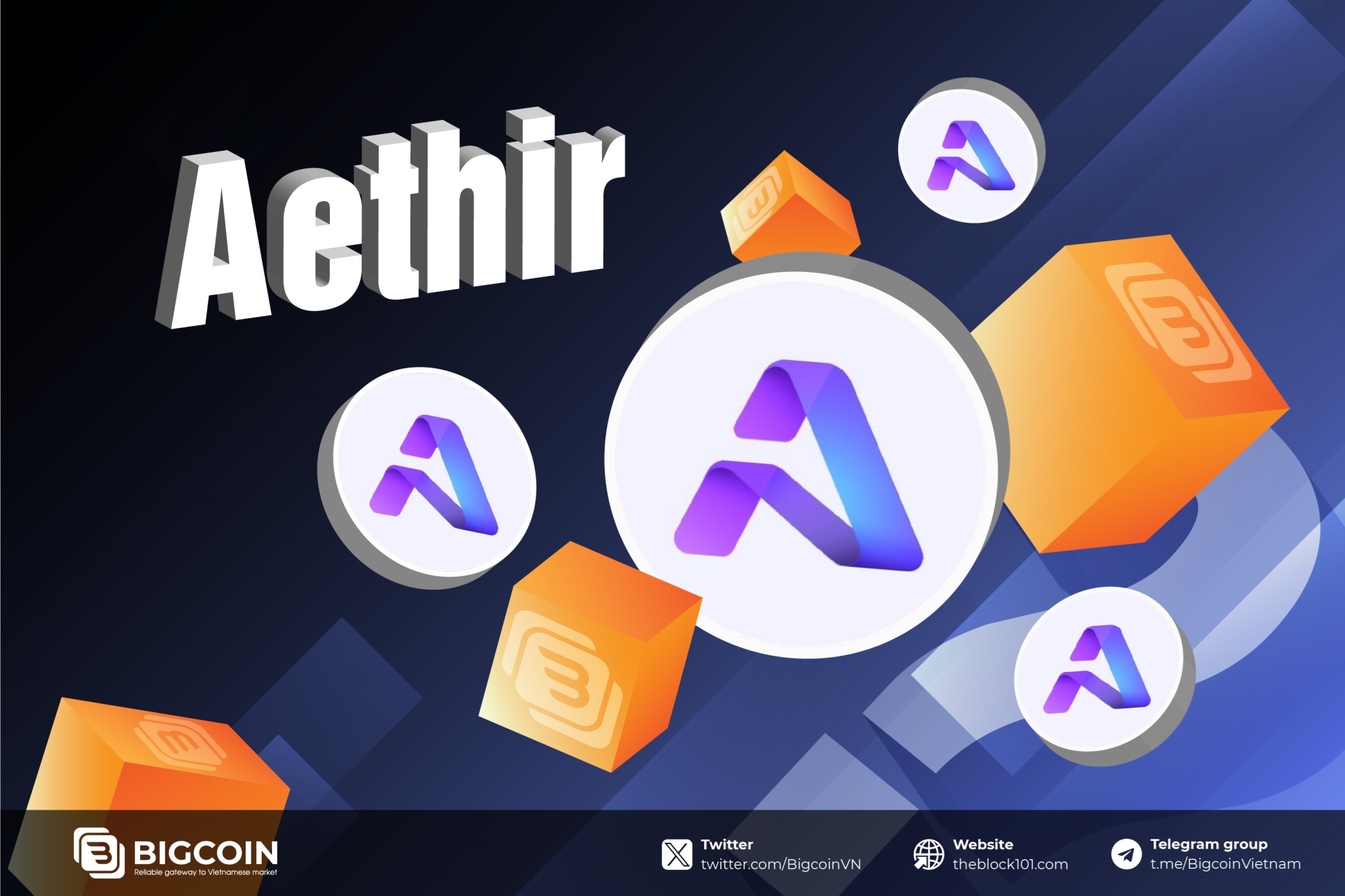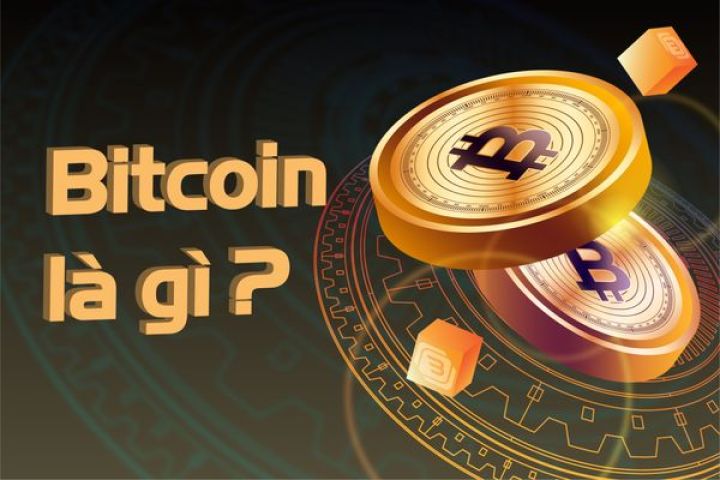1. What is Bitcoin?
Bitcoin (symbol $BTC) is the world's first and most popular electronic currency, created by an anonymous individual or group of people under the pseudonym Satoshi Nakamoto in 2009.
- What is Bitcoin's blockchain technology?
Bitcoin operates on a technology called "Blockchain." Blockchain acts as a distributed ledger that allows transactions and data to be recorded transparently and cannot be modified in any way.
Each Bitcoin transaction is recorded in a block and then linked to previous blocks. This helps create a secure and immutable system for data.
- Why was Bitcoin created?
In 2008, global financial markets witnessed the most serious crisis since the Great Depression of the 1930s.
During this time, the financial market encountered many events, leading to the bankruptcy of large banks and businesses. Banks and financial institutions have used user deposits for transactions and created non-transparent assets, making people unaware of their exact financial situation.
Not only that, the lack of transparency in the financial system has made transactions difficult. The crisis has also eroded people's trust in the traditional financial system. From there, a new system needs to be created to ensure transparency and safety in financial transactions, reinforcing people's trust in the financial system.
At that time, blockchain technology was just a new idea being researched. Blockchain is a mechanism that allows transactions to be recorded transparently and immutably across a decentralized system without the need for an intermediary.
The idea of decentralized digital currency was born based on the story of blockchain. Bitcoin's creator, known by his alias Satoshi Nakamoto, wrote a paper in 2008 describing a completely new decentralized digital currency system.
-min.png)
Nakamoto uses blockchain technology to create a decentralized currency that allows transactions to take place directly between parties without the intervention of banks or intermediaries and that anyone can access. access to inspect transactions.
Those concerned about the financial crisis saw Bitcoin's potential as a way to solve the problems of the traditional financial model. Gradually, interest in decentralized and digital financial solutions such as Bitcoin is increasing.
Some people also see Bitcoin as an asset with the ability to store value like gold. The number of Bitcoins is limited, only a maximum of 21 million of this digital currency can be mined, so many people hope that the value of Bitcoin can increase over time. That is the cause and context of the birth of Bitcoin.
2. History of formation and development of Bitcoin
Bitcoin has gone through a long journey from a currency worth only a few coins to becoming a highly valuable asset and has a certain influence on the cryptocurrency market in particular and the financial market in general. shared.
Below are some outstanding milestones in the formation and development of Bitcoin:
- 2008: The community learned about Bitcoin from an article posted by an individual or group of users named Satoshi Nakamoto. This article is titled "Bitcoin: A Peer-to-Peer Electronic Cash System" and describes a new decentralized currency system based on blockchain technology.
- 2009: On January 3, 2009, the first Bitcoin software was released, allowing users to create wallets and conduct Bitcoin transactions. This day is also known as "Genesis Day" - the official launch day of Bitcoin.
- May 2009: First user makes a purchase with Bitcoin. A user named Laszlo Hanyecz paid 10,000 Bitcoin to buy two pizzas from another person via the Bitcointalk forum. Currently, people still take May 22 as the anniversary of the first Bitcoin purchase transaction in history, called " Bitcoin Pizza Day".
- 2010: Some of the first Bitcoin exchanges are established, allowing users to buy and sell Bitcoin with each other using fiat currencies such as USD. The value of Bitcoin also started to increase significantly from just a few cents to a few US dollars.
- 2013: Bitcoin price skyrocketed to over $1,000 for the first time. This attracted widespread attention from the public and media. Bitcoin exchanges became more popular and users around the world became interested in Bitcoin.
- 2017: Bitcoin price rose suddenly to over $20,000 in December 2017, attracting huge attention and making Bitcoin a popular topic. However, after that, the price of Bitcoin also plummeted, causing a period of great volatility in the market.
- From 2018 to present: Bitcoin continues to grow and become more popular. Many large companies and organizations started accepting Bitcoin as a means of payment. At the same time, Bitcoin's blockchain technology has encouraged the birth of thousands of other cryptocurrencies.
-min.png)
3. How Bitcoin works
Bitcoin operates based on the Proof of Work (PoW) consensus mechanism. This mechanism is used to confirm transactions and protect the Bitcoin network from attacks.
-min.png)
Here's how Bitcoin's PoW consensus mechanism works:
- Bitcoin Transaction: When a user sends or receives Bitcoin, the transaction is sent into the Bitcoin network for confirmation and recorded in a new block in the blockchain.
- Create a new block: New transactions are aggregated into a new block. Each block contains information about transactions and also contains the hash of the previous block, forming a linked chain called a blockchain.
- A block can contain information about Bitcoin transactions made in about 10 minutes.
- Each Bitcoin block has a transaction size limit of 1MB. However, with Bitcoin's scaling solutions, the limited size of blocks is increasing up to 2MB, 4MB.
- Mining: Before a new block is added to the blockchain, miners must solve a complex mathematical puzzle. This puzzle is called the "Proof of Work puzzle" or "mining problem". The miner needs to find a value (nonce) such that the hash of the new block combined with this nonce will produce a result that satisfies a certain condition.
- Energy consumption: Solving the PoW puzzle requires miners to expend computational energy. They have to test many different nonce values until they find the right result. The first miner to solve the puzzle and create a new block is rewarded with a fixed amount of Bitcoin, as well as the transaction fees within that block.
- Transaction confirmation: When a new block is created and added to the blockchain, the transactions in that block are confirmed and considered successful. Users receive Bitcoin from their transaction when confirmed in a block.
The PoW mechanism helps protect the Bitcoin network from attacks by requiring attackers to spend a lot of energy to attack and change blocks that have been confirmed in the past. This makes changing transaction history very difficult and impossible.
*To understand more about this mechanism, read more at: What is Blockchain
4. Unit of measurement of Bitcoin
Bitcoin uses different units of measurement to represent its value and quantity. This enhances the efficiency and convenience of trading and pricing different quantities of Bitcoin.
Here are some of Bitcoin's main units of measurement:
| Unit | Value (BTC) | Value (sats) |
|---|---|---|
| Bitcoin (BTC) | 1 BTC | 100,000,000 sats |
| MilliBitcoin (mBTC) | 0.001 BTC | 100,000 sats |
| MicroBitcoin (μBTC) | 0.000001 BTC | 100 sats |
| Satoshi (sats) | 0.00000001 BTC | 1 sat |
In there:
- Bitcoin (BTC) : The basic and largest unit of measurement of Bitcoin. This is the most commonly used unit when discussing the value and transactions of Bitcoin.
- MilliBitcoin (mBTC) : This unit is often used when Bitcoin prices rise to high levels and the value of 1 BTC becomes too large to carry out daily transactions.
- MicroBitcoin (μBTC) : This unit is also known as a "bit". It is often used in cases where the price of Bitcoin increases beyond the million dollar level and the value of 1 BTC becomes too large to value common products and services.
- Satoshi (sats) : This is the smallest and smallest unit of Bitcoin. This unit is named after the founder of Bitcoin, Satoshi Nakamoto. Because the value of one Bitcoin is so large, using satoshis makes it easier to value and trade small amounts of Bitcoin.
For example:
- 0.5 BTC = 50,000,000 sats
- 500 mBTC = 50,000,000 sats
- 500,000 μBTC (bits) = 50,000,000 sats
- 50,000,000 sats = 0.5 BTC
5. Characteristics of Bitcoin
Advantage
- Decentralized and not controlled by banks or governments: Bitcoin operates on blockchain technology, does not depend on any organization, and no government controls it. This ensures Bitcoin's decentralization and autonomy.
- Security and safety: It can be said that Bitcoin's blockchain is one of the safest blockchain networks today. Because, Bitcoin transactions are encrypted with strong cryptography, making them difficult to hack or defraud.
- Fast and economical international transactions: Sending and receiving Bitcoin can be done quickly and economically without going through complicated steps from banks or traditional money transfer services. This is especially useful when trading between different countries.
- Potential for storing value: Some people use Bitcoin as a means to store value. Due to its limited supply (maximum 21 million Bitcoins), some believe that Bitcoin can retain its value over time, just like gold.
- Availability and ease of use: Bitcoin is available 24/7 and has no geographical restrictions. Anyone with an internet connection can use and access Bitcoin through e-wallets and exchanges.
- Anonymous transactions and privacy protection: When using Bitcoin, users can maintain a level of anonymity and protect their privacy. However, it is worth noting that transactions on the blockchain are still public and can be audited by anyone.
Disadvantage
- Price fluctuations: Bitcoin prices can fluctuate widely, even in short periods of time. This creates high risks for investors and users using Bitcoin as a means of payment.
- Transaction speed: Due to the complex Proof of Work (PoW) consensus process, Bitcoin transaction confirmation times can be longer than traditional payment systems.
- High energy consumption: The PoW mechanism requires miners to consume large computational energy to solve puzzles, resulting in large energy consumption of the Bitcoin network.
- Does not support smart contracts: Bitcoin is a blockchain network that does not support smart contracts and this causes the Bitcoin network to face huge limitations in terms of expansion and transaction processing ability.
- Legal and regulatory issues: Some countries have introduced regulations and restrictions regarding the use and trading of Bitcoin, which may create uncertainty about the future of Bitcoin.
6. Bitcoin upgrades
Bitcoin upgrades are new software versions released to improve and upgrade the functionality, performance, and security of the Bitcoin network. These upgrades are implemented through a process of agreement between users and developers in the Bitcoin community.
Here are some examples of important Bitcoin upgrades:
- Bitcoin Core 0.1.0 (Satoshi Nakamoto, 2009) : This is the first software version of Bitcoin, created by the creator of Bitcoin - Satoshi Nakamoto. This release marks the beginning of the Bitcoin network and integrates the functionality to create and manage transactions, as well as calculate mining difficulty.
- Segregated Witness (SegWit) (2017) : SegWit is an important upgrade that reduces transaction size and increases Bitcoin network performance load. It solved some of Bitcoin's scalability problems and helped reduce transaction fees and transaction confirmation times.
- Bitcoin Core 0.16.0 (2018) : This upgrade includes Native SegWit (bech32) integration, which further optimizes SegWit usage and reduces transaction sizes. It also already supports integration with popular wallet software like Electrum and automatically creates default SegWit wallets for new users.
- Bitcoin Core 0.18.0 (2019) : This upgrade has improved integration for the Tor network (an anonymous IP address system), helping to increase user privacy and security. It also adds other improvements such as automatic fee levels and improved user interface.
- Taproot (2021) : This is one of the most important upgrades in Bitcoin history. Taproot helps improve privacy and enhance Bitcoin's smart contract features. It reduces transaction size and makes transactions using smart contracts more compact, increasing efficiency and reducing transaction fees.
Bitcoin upgrades are an important part of growing and enhancing the functionality of the network, while keeping the system more stable and secure. While agreement within the Bitcoin community is needed to implement these upgrades, continued development helps Bitcoin continue to become one of the most important and trusted digital currencies in the world.
7. Layer 2 of Bitcoin
Layer 2 of Bitcoin is the development layer built on Layer 1 and inherits Layer 1's features to expand the network's operational capabilities. Without Layer 2, scaling the Bitcoin network would be difficult.
The current Bitcoin blockchain network is only capable of processing about 7 transactions per second, which is a limitation on the network's transaction speed. From there, Bitcoin's Layer 2 solutions emerged to handle this problem.
Below are some outstanding Layer 2 of Bitcoin.
Lightning Network
To solve the scalability problem, there has been the Lightning Network , which is a Layer 2 of the Bitcoin network that uses a solution called payment channels.
-min.png)
Each channel in the Lightning Network can process an average of 250-500 transactions per second and there is no limit to the number of channels participating in the network. With the current number of channels, it is theoretically possible that Bitcoin's Lightning Network can handle 20-40 million transactions per second.
-min.png)
However, it should be noted that the above numbers only exist in theory, and currently there are still challenges in popularizing the use of BTC for payments on a large scale. If BTC is not adopted and the Bitcoin network wants to develop in a different direction, the Lightning Network may lose its value because the payment channels solution is mainly used for payments. If the Lightning Network is no longer valid, the Bitcoin network will return to its original scaling problem.
It can be said that Lightning Network is the only option that Bitcoin has chosen to go with. If successful, it will help BTC become a widely accepted currency; If it fails, it could leave BTC far behind its future competitors, especially blockchains that support smart contracts that are growing rapidly today.
Liquid Network
Liquid Network is a Layer 2 form of Bitcoin developed by Blockstream company. It is designed to provide solutions for trading and interacting with Bitcoin faster, more securely and more efficiently than trading directly on the Bitcoin blockchain (Layer 1).
Based on sidechain technology, Liquid Network allows Bitcoin transactions on this network to take place in parallel with the main Bitcoin network, with fast processing and lower transaction fees. Liquid Network is considered an "independent" network parallel to the main Bitcoin network, but still ensures the safety and security of assets traded in this network.
Liquid Network has a token called "L-BTC" that is pegged 1:1 with BTC. Currently, there are approximately ~3,556 L-BTC in circulation.
Although Liquid Network brings many benefits and improvements to the Bitcoin network, it still has some limitations that should be kept in mind:
- Dependency on third parties: Liquid Network is operated by Blockstream and other participating parties. As a result, the network has a degree of dependence on third parties to process transactions and maintain network operations. This increases the risk of losing decentralization and facing risks related to trust in third parties.
- Transaction Fees: Although Liquid Network offers lower transaction fees than the Bitcoin main network, there may still be costs associated with using this network. This may reduce the attractiveness of Liquid Network.
- Scalability limitations: Although Liquid Network can handle a larger volume of transactions than the Bitcoin main network, it still has scalability limitations. As the number of transactions on the network increases, there may be congestion and reduced performance of the Liquid Network.
Rootstock
In fact, Rootstock (RSK) is not a Layer 2 of Bitcoin but a sidechain (side chain) of Bitcoin. It was developed with the goal of providing Ethereum features, such as smart contracts, on top of Bitcoin.
For a simple understanding, imagine Bitcoin is a main house, and RSK is a private room inside that house. Assets and data can move between Bitcoin and RSK bidirectionally through a special gateway.
RSK uses a unique variation of Bitcoin's Nakamoto consensus, called "DECOR+". This allows RSK to be mined concurrently with Bitcoin, and in the past, around 40-50% of Bitcoin miners have participated in RSK mining.
But it is still important to note that RSK is not completely dependent on Bitcoin but can operate independently.
Smart Bitcoin ("RBTC") is the native currency of RSK and is used to pay transaction fees. RBTC has a fixed ratio of 1:1 to BTC (i.e. RBTC also has a maximum total supply of 21 million).
Rootstock offers the following benefits:
- Smart Contracts : Rootstock allows developers to build and deploy smart contracts similar to Ethereum. This opens up many new applications and use cases on the Bitcoin platform.
- Increased transaction speed and reduced fees : Thanks to the use of sidechains, RSK can process transactions faster and with lower fees than the main Bitcoin network.
- Deep integration with the Bitcoin ecosystem : Rootstock was developed with the goal of tight integration with Bitcoin. Users can convert between Bitcoin and RSK easily through the communication portal.
- Increased security : RSK inherits strong security from Bitcoin, helping to ensure the safety of operations and transactions on this platform.
However, there are also some limitations:
- Dependent on sidechain : Although RSK operates independently, it still depends on the trust of the sidechain and the parties involved in the transaction processing process.
- Need to ensure compatibility : For applications that have been deployed on Ethereum, some changes need to be made so that they can run on RSK.
Statechains
Statechains are a Layer 2 method for Bitcoin, but it is different from traditional solutions like Lightning Network and Rootstock. Statechains are designed to solve the problem of decentralization and scalability in the Bitcoin network. To put it simply, Statechains are tools that help share ownership of Bitcoin flexibly and securely among users without recording transactions on the Bitcoin blockchain.
For example, if you borrow money from a friend. When you want to borrow money from a friend, you do not need to record the borrowing transaction on public records but simply receive the money and then return the corresponding amount when needed. Now, you and your friends are changing ownership of that money without having to make many transactions on public books.
Similarly, Statechains allow users to transfer Bitcoin funds between each other without recording the transactions on the blockchain. Instead of making many traditional transactions on the blockchain, users simply change the ownership of Bitcoin funds through digital signatures. Transactions are not recorded on the blockchain, until a user wants to put his or her funds back into the Bitcoin main network. They can then perform a transaction on the blockchain to put the funds into their Bitcoin wallet.
-min.png)
As such, Statechains help reduce the load on the Bitcoin blockchain by moving Bitcoin transactions off the main blockchain and executing them off-network. This improves processing speed and reduces transaction fees on the blockchain. In addition, the decentralization of Statechains allows users to conduct transactions directly with each other without the need for intermediaries, increasing user privacy and safety.
However, it should be noted that Statechains is still in the development stage and may need time and real-world testing to ensure its security and stability.
8. Ordinals and Bitcoin NFTs
Overview of Ordinals and Bitcoin NFTs
In February 2023, the Bitcoin network minted a block of 4MB in size, four times higher than the usual limit of 1MB. The cause of this event is that a special transaction was "engraved" on the image, and this transaction almost occupied the entire space of block number <774628>.
This block became a historical milestone for Bitcoin NFT (Non-Fungible Token), paving the way for the Bitcoin NFT or "Ordinals Inscription" movement.
-min.png)
As analyzed above, Bitcoin's blockchain cannot build smart contracts, so it cannot support sets of standards specifically for NFT development like other conventional blockchains. Since its inception, the only application Bitcoin has performed well is storing value.
However, developers wanted more and Casey Rodarmor - a software engineer created the Ordinals protocol, allowing users to mint NFTs on the Bitcoin network.
Read more: What is Ordinals? Overview of Bitcoin NFTs
Bitcoin NFT creation mechanism
To create Bitcoin NFT on the Bitcoin network, the mechanism is as follows:
- Generate UTXO (Unspent Transaction Output): After each transaction on the Bitcoin network, a UTXO (Unspent Transaction Output) is created. UTXO contains information about your balance and is stored on the blockchain.
- Using the Ordinals protocol: The Ordinals protocol allows attaching NFT information (Inscription) to UTXOs, also known as "engraving NFTs" into Bitcoin. The NFT information has been encoded into a string before and added to your UTXO. To put it simply, Ordinals is engraving NFTs on your balance certificate.
- The smallest unit of Bitcoin is Satoshi: The smallest unit of Bitcoin is Satoshi, corresponding to 1 BTC = 100,000,000 sats (Satoshi). Using Ordinals, you can track individual sats and engrave NFT information onto each sats.
- Inscription: is the content engraved on sats to create Bitcoin NFT. You can also understand Inscription as NFT on the Bitcoin network. These Bitcoin NFTs are stored on the Bitcoin network and can be converted back and forth through the Ordinals protocol.
With this mechanism, you can create Bitcoin NFTs and attach unique information to each smallest unit of Bitcoin (Satoshi). So, each Bitcoin can create many Bitcoin NFTs, and these NFTs are stored on the Bitcoin network and can be traded back and forth through the Ordinals protocol. The introduction of Bitcoin NFTs on the Bitcoin network has been fueled by upgrades like SegWit and Taproot, opening a new door for creativity and growth in the digital art sector.
Impact of Bitcoin NFTs
- Within just 1 month since the 4MB block was minted, the number of Inscriptions created on the Bitcoin network increased dramatically, leading to a sharp increase in transaction volume on the network.
-min.png)
- The Bitcoin network becomes busier and miners have the opportunity to earn more rewards from rapidly increasing transaction fees.
Outstanding Bitcoin NFT collections
Bitcoin NFT is the beginning of an economy revolving around photos on the Bitcoin network. Inscription, Marketplace, Wallet, Swap creation services have appeared. The Bitcoin NFT ecosystem is also receiving attention from the investor community.
Below is information on some outstanding Bitcoin NFT collections:
- Taproot Wizards: The collection's first NFT created a historic 4MB block. This is a collection of 2,121 witch NFTs backed by Udi Wertheimer.
- Ordinal Punks: Representative collection with 100 NFTs minted at the first 650 Inscriptions.
- Bitcoin Punks: Collection featuring the first 10,000 NFTs deployed on Bitcoin via Ordinals.
- Twelvefold: A collection of 300 NFTs issued by Yuga Labs on the Bitcoin network.
9. New token standards on Bitcoin
BRC-20 token standard
The Ordinals protocol and Bitcoin NFT have brought new life and disruption to the cryptocurrency market. BRC-20 is the next step forward for Bitcoin NFTs, but unlike smart contract-interoperable token standards on the Ethereum network, BRC-20 is designed to be simpler, intended only to store tokens. data on the Bitcoin network.
What is BRC-20?
BRC-20 is an experimental token standard built using Ordinals and Inscriptions and hosted on the Bitcoin blockchain. In other words, the BRC-20 token standard allows developers to create and send tokens through the Ordinals protocol.
BRC-20 token was created by a Twitter user with the username @domodata on March 8, 2023.
<blockquote class="twitter-tweet"><p lang="en" dir="ltr">gm. I'm glad that some people like the experiment. Some additional notes. <br>1. These will be worthless. Please do not waste money mass minting. <br>2. Due to how some inscription tools are set up, the 'balance' may be minted to the intermediary address used in <a href="https://t.co/mja39YGIow">https://t.co/mja39YGIow</a>…</p>— domo (@domodata) <a href="https://twitter.com/domodata/status/1633828036943704068?ref_src=twsrc%5Etfw">March 9, 2023</a></blockquote> <script async src="https://platform.twitter.com/widgets.js" charset="utf-8"></script>
Read more: What is BRC-20? New destination for meme tokens
Impact of BRC-20 on Bitcoin blockchain
The trading volume of the BRC-20 token peaked on May 1 at 366,000 transactions, with a total of 2.36M transactions on the network.
-min.png)
Along with the increase in BRC-20 trading volume, transaction fees have increased due to the activity of new tokens. Since its inception in late April, the BRC-20 network has generated an additional 109.7 BTC in transaction fees for miners.
-min.png)
ORC-20 token standard
ORC-20 is an open standard designed to improve the BRC-20 standard on the Bitcoin network. The goal of ORC-20 is to maintain backward compatibility with BRC-20 while improving adaptability, scalability, and security.
Current limitations of the BRC-20 standard, such as double-spending and limited naming space, have led to the need for improvements. The proposed ORC-20 introduces several improvements, such as UTXO and flexible naming spaces, to address these limitations.
Read more: What is ORC-20? New improvements compared to BRC-20
10. How is Bitcoin used?
In the United States, people often use Bitcoin as an alternative investment, helping to diversify their portfolio beyond stocks and bonds.
You can also use Bitcoin to make purchases, but only a few vendors accept the original cryptocurrency.
Major companies that accept Bitcoin include Microsoft, PayPal, and Whole Foods, etc. You may also find that some small local retailers or certain websites accept Bitcoin, but you will have to make a number of digging operations.
You can also use a service that allows you to connect a debit card to your cryptocurrency account, meaning you can use Bitcoin the same way you use a credit card. This usually involves a financial provider instantly converting your Bitcoin into dollars.
In other countries—especially those with less stable currencies—people sometimes use cryptocurrencies instead of their own currencies.
Bitcoin provides an opportunity for people to store value without relying on a government-backed currency. It gives people an option to prevent the worst-case scenario. You have clearly seen this in countries like Venezuela, Argentina and Zimbabwe (countries with heavy debt), Bitcoin is gaining great traction.
11. How to buy Bitcoin?
Most people buy Bitcoin through electronic exchanges. These exchanges allow you to buy, sell and hold cryptocurrencies. Setting up an account is similar to opening a brokerage account—you'll need to verify your identity and provide some source of funds, such as a bank account or debit card.
Main exchanges include Coinbase, Kraken, Binance, OKX or Huobi. You can also buy Bitcoin through some brokers in the OTC form, but you need to be aware of risks related to money laundering, fraud,...
No matter where you buy Bitcoin, you will need a Bitcoin wallet to store it. It can be a “hot wallet” or a “cold wallet”.
Some important notes about buying Bitcoin: Although Bitcoin is expensive, you can buy retail Bitcoin from a number of vendors.
You also need to pay attention to fees, which are typically a small percentage of your cryptocurrency transaction amount but can add up for small dollar purchases.
Finally, Bitcoin purchases are not instantaneous like many other equity purchases. Because miners must verify Bitcoin transactions, it can take 10 to 20 minutes to see the amount of Bitcoin purchased in your account.
12. How to invest in Bitcoin
Like stocks, you can buy and hold Bitcoin as an investment. You can even now do so in special retirement accounts called Bitcoin IRAs.
No matter where you choose to hold your Bitcoin, everyone's philosophy on how to invest in it will be different: Some buy and hold for the long term, some buy and aim to sell after the price rises, and others Another bets on its price falling.
The price of Bitcoin over time has experienced major price fluctuations, as low as $5,165 and as high as $28,990 in 2020 alone.
“I think in some places, people may use Bitcoin to pay for things, but the truth is that it's an asset that looks like it's going to increase in value relatively quickly over a period of time,” Marquez said. “So why would you sell something that will be worth a lot more next year than it is today? The majority of its holders are long-term investors.”
Consumers can also invest in Bitcoin mutual funds by purchasing shares of Grayscale Bitcoin Trust (GBTC).
However, the minimum investment requirement is 50,000 USD. This means the majority of Americans cannot buy it. However, in Canada, diversified Bitcoin investing is becoming more accessible. In February 2021,
Purpose Bitcoin ETF (BTCC) began trading as the world's first Bitcoin ETF and the Ontario Securities Commission also approved Evolve Bitcoin ETF (EBIT).
US investors looking for Bitcoin or Bitcoin-like capabilities can consider blockchain ETFs that invest in cryptocurrency technology.
An important note: While crypto mutual funds can add diversification to cryptocurrency holdings and mitigate risk, they still carry significantly more risk and charge high fees much better than broad-based index funds that have a history of delivering consistent returns.
Investors looking to steadily grow their assets can choose index-based mutual funds and exchange-traded funds (ETFs).
13. Frequently asked questions (FAQs)
How to buy and sell Bitcoin?
You can trade Bitcoin in two ways: trading on exchanges or OTC trading. However, if you are new to the market, you should buy and sell Bitcoin on reputable cryptocurrency exchanges such as Binance, OKX, Huobi,...
Where should bitcoins be stored?
Bitcoin can be stored at a Bitcoin wallet or at an exchange wallet. If you buy Bitcoin on the exchange, that Bitcoin will be stored at the exchange. If you want full control over your Bitcoin, you can choose to save it in a Bitcoin wallet (eg Ledger, Trezor, Electrum or Exodus wallet). However, when storing Bitcoin in a personal wallet, you need to ensure the security of your wallet.
Is Bitcoin a scam?
No, Bitcoin is one of the largest coins in terms of capitalization in the cryptocurrency market. With the contributions and achievements Bitcoin has made in the market, it can be said that Bitcoin is a reputable currency and has a strong impact on the crypto market.
What is BTC Dominance?
Bitcoin Dominance (or BTC. D, BTC Dom), is the dominance index of Bitcoin in the cryptocurrency market. BTC Dominance is the ratio of Bitcoin's market capitalization to the total market capitalization of the entire crypto market.
BTC Dom = Marketcap BTC / Marketcap Total market
What is Bitcoin Halving?
Bitcoin halving is an event marking the halving of the Bitcoin block reward, which takes place approximately every 4 years. This is an important event that affects the price of Bitcoin in particular and the entire cryptocurrency market in general.
14. Conclusion
Bitcoin was born with a mission to bring a new financial model that is more decentralized, democratic and free, strengthening people's confidence after the crises caused by the traditional financial model.
Through many years of development, Bitcoin not only represents the first digital currency but also opens the door to the development of many new cryptocurrency models. With such important significance, Bitcoin has created a "culture" in the crypto market and promises to continue to develop further in the future.
For anyone entering the cryptocurrency market, Bitcoin and its technology will be a prerequisite for you to learn and lay the foundation for your knowledge in the market.
Hopefully through this article you have understood what Bitcoin is! Follow Theblock101 to not miss important knowledge and the latest updates about Bitcoin.
Read more:
What is Bitcoin Halving? Everything About Bitcoin Halving 2024 In 5 Minutes


 Tiếng Việt
Tiếng Việt
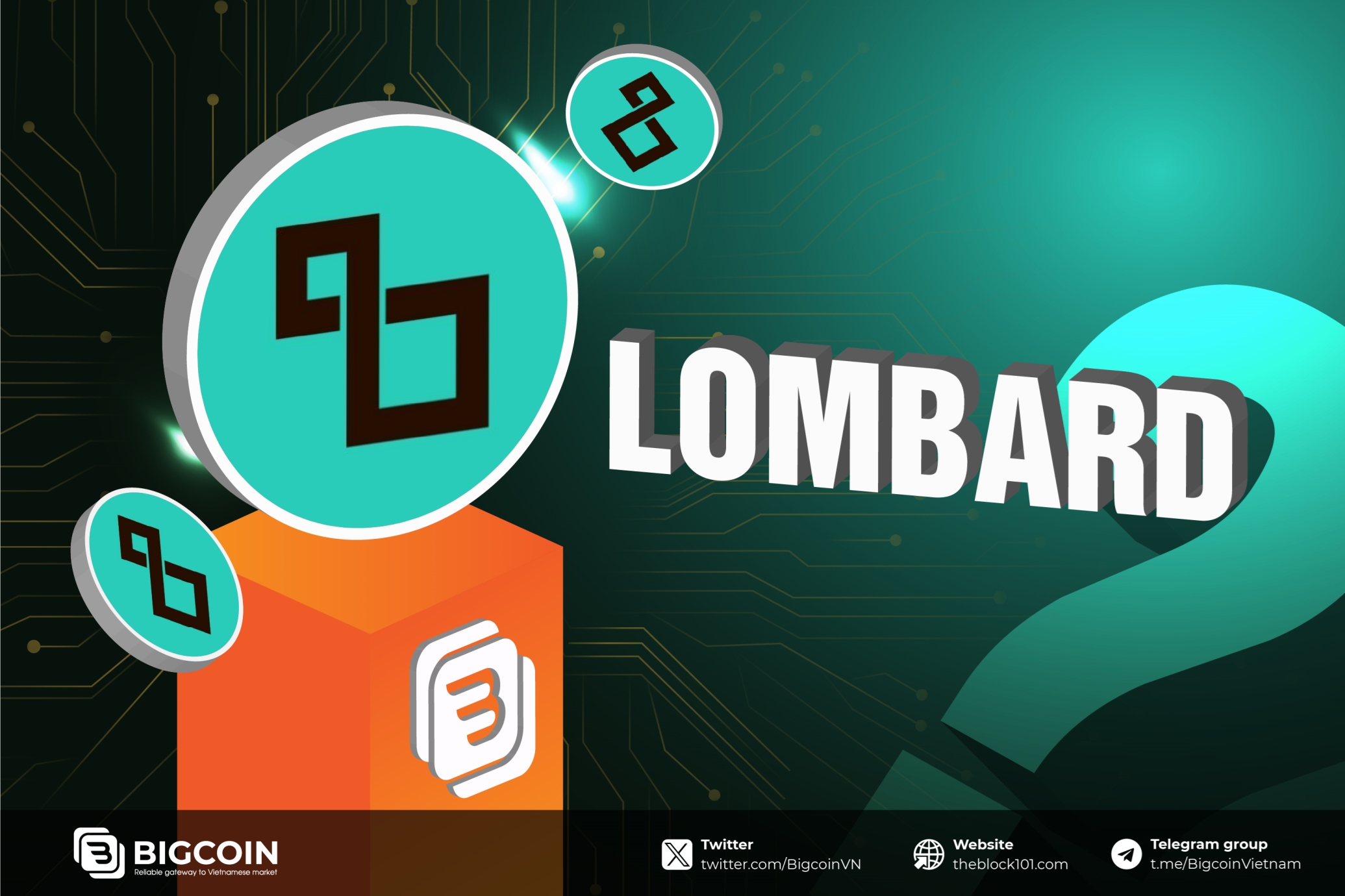
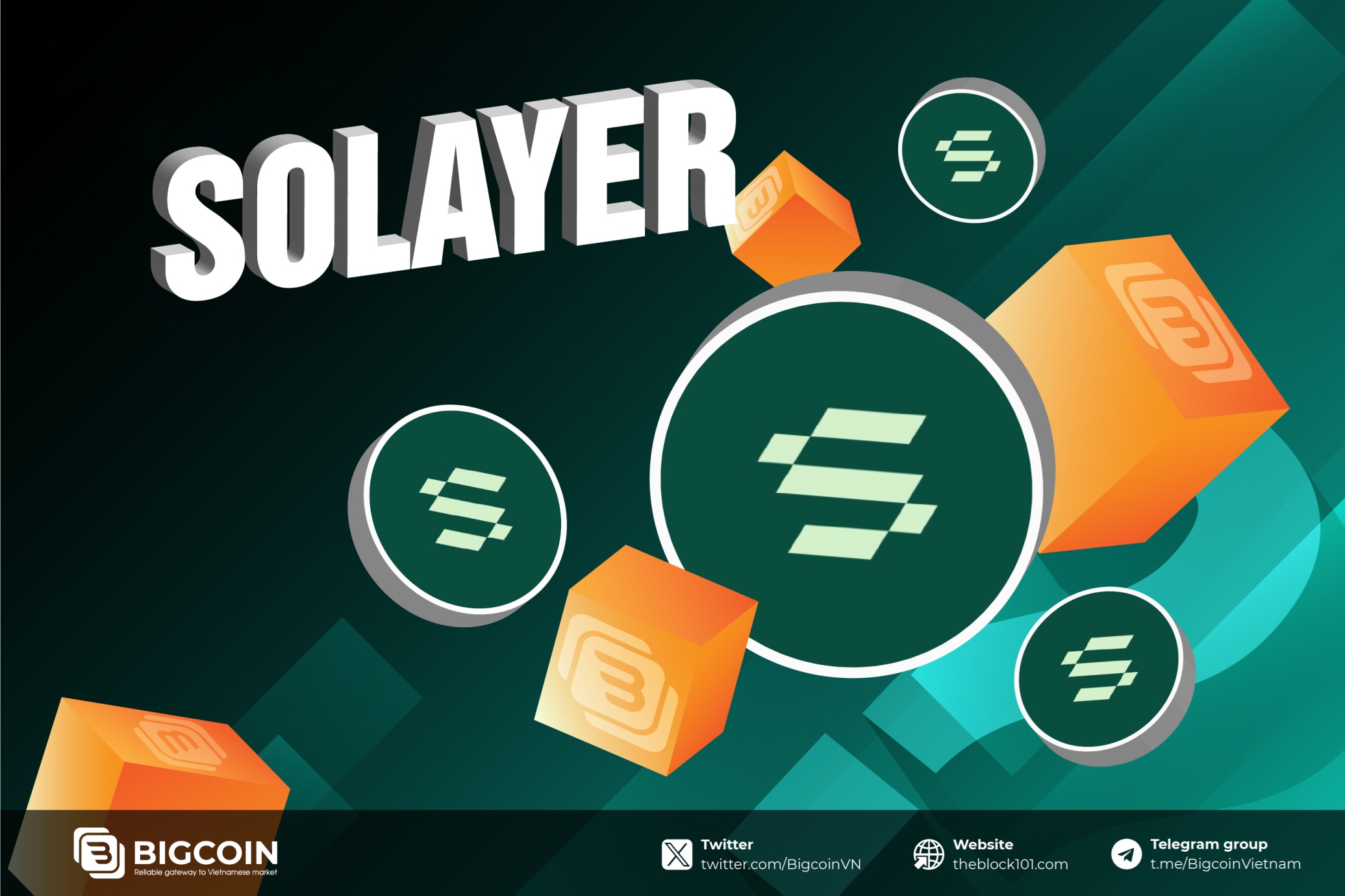
.jpg)
